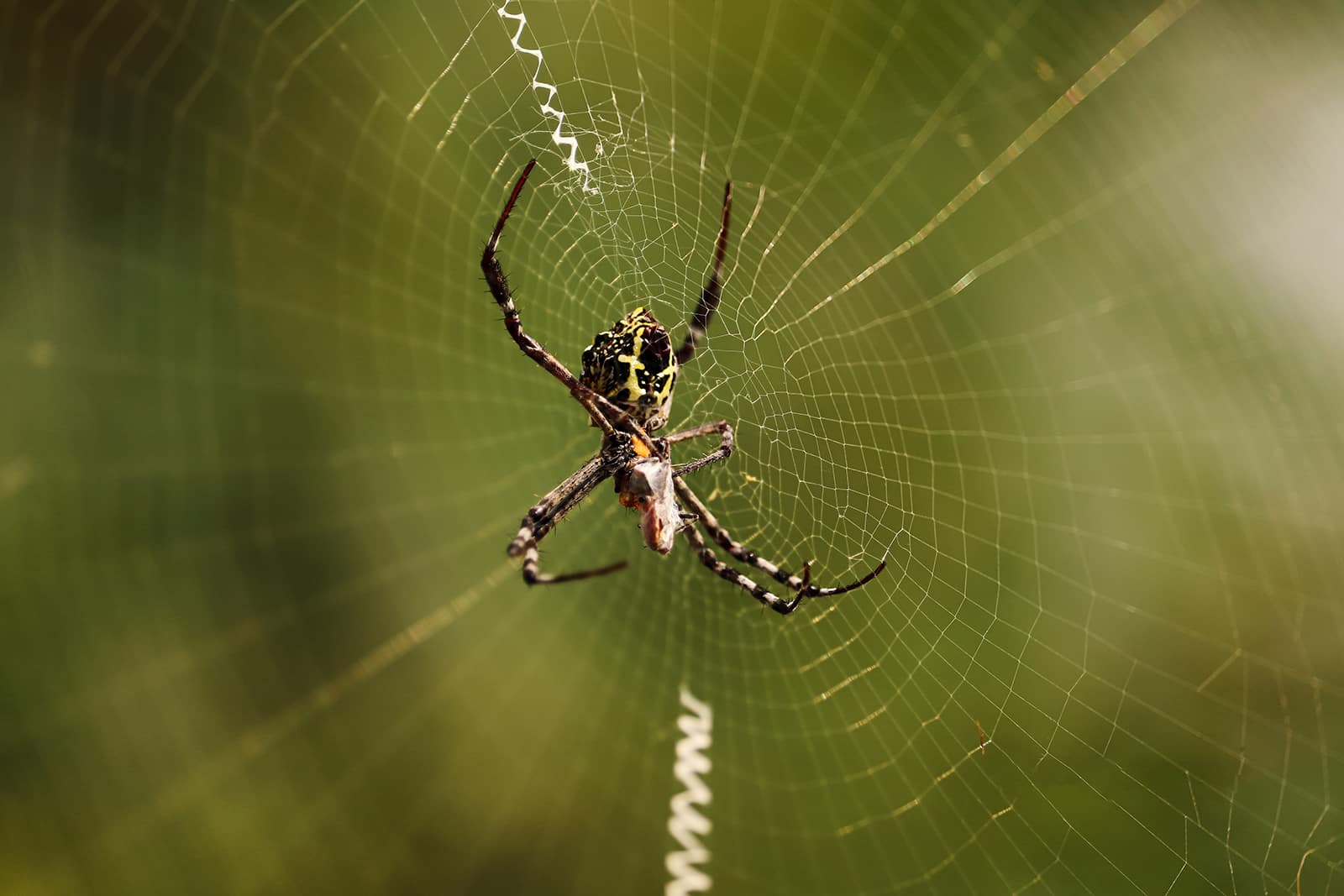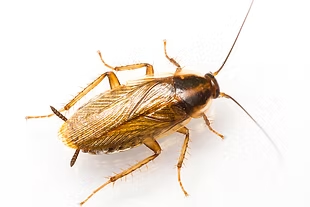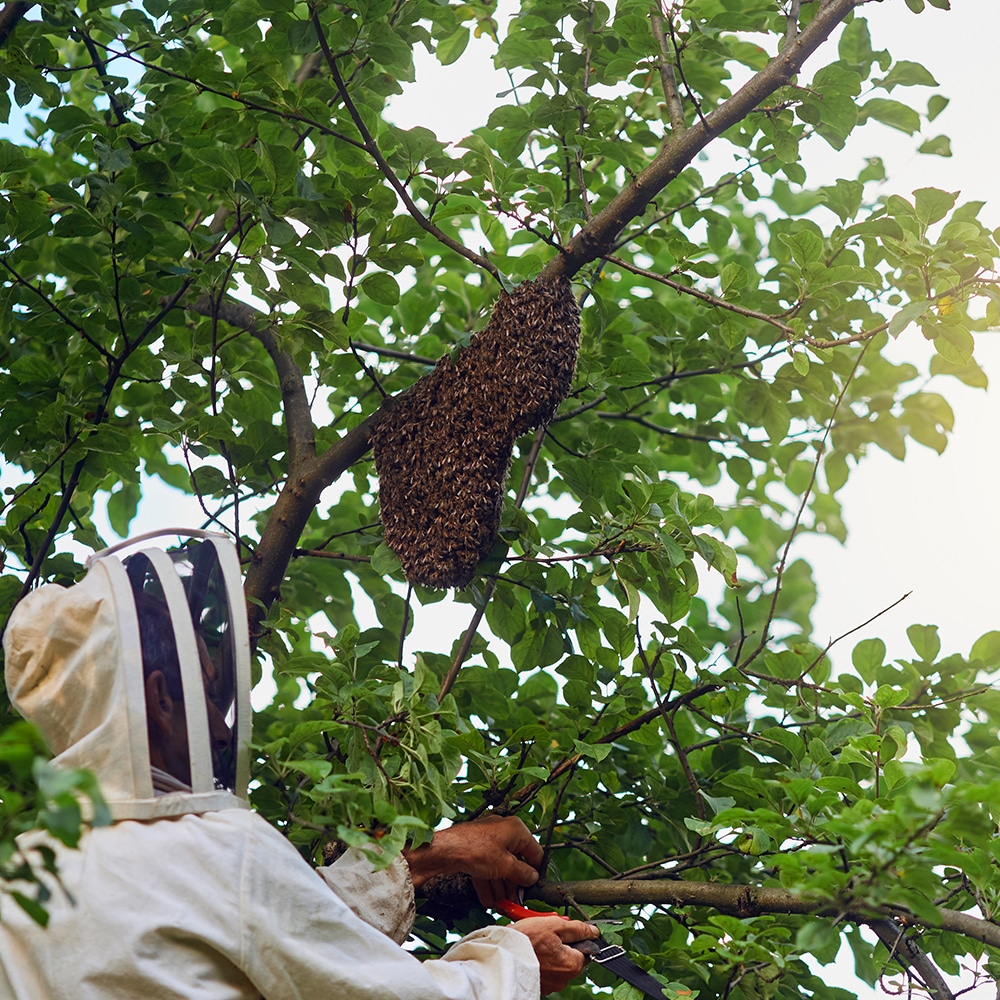
Why Do Spiders Come Back And Why
Why Do Spiders Come Back And Why On The Central Coast NSW. Responsive Proactive Solutions. Detail-focused for lasting results. Call Adam on 0431 222 894
Are you struggling with a German cockroach problem? Learn how to identify and eliminate German cockroach infestations effectively with Vital Pest Control on the Central Coast NSW. Our solutions are reliable, fast, and prioritise quality. Discover practical tips and professional methods to keep your home cockroach-free. Visit Vital Pest Control for trusted pest control services.
What do German cockroaches look like?
German cockroaches are small, light brown insects with two dark stripes on their backs. These pests measure about 1.5 cm long, making them easy to overlook. Their flattened bodies help them fit into tight spaces.
Why are German cockroaches so hard to kill?
German cockroaches have incredible survival skills. They quickly adapt to various environments and resist common pesticides. Their small size allows them to squeeze into hidden spots, evading detection and extermination.
How fast do German cockroaches reproduce?
These pests reproduce rapidly, with a single female producing 30-40 eggs per capsule. In just a few weeks, these eggs hatch, leading to a swift increase in numbers. This fast reproduction rate makes infestations challenging to control.
Where do German cockroaches hide?
German cockroaches favour warm, moist areas like kitchens and bathrooms. They hide in cracks, crevices, and behind appliances. Their nocturnal nature means they are most active at night, making them hard to spot during the day.
Best professional treatments for German cockroaches
Professional treatments target both adult cockroaches and their eggs. Effective methods include gels, baits, and sprays. Professional exterminators ensure thorough coverage, eliminating infestations reliably and efficiently.
Why DIY methods often fail against German cockroaches
DIY methods frequently miss hidden areas where cockroaches thrive. Homemade solutions lack the potency of professional-grade treatments. As a result, infestations persist, causing ongoing frustration for homeowners.
How to prevent a German cockroach infestation
Maintain cleanliness by regularly cleaning up food crumbs and spills. Seal cracks and crevices to block entry points. Regular inspections by experts can help detect early signs of infestation, preventing larger problems.
Are German cockroaches dangerous to humans?
German cockroaches can spread bacteria and allergens, leading to health issues. They contaminate food and surfaces, posing risks to human health. Quick action is crucial to minimise these dangers.
Ready to tackle your cockroach problem? Discover how we can help you today!

German cockroaches are a common pest in Central Coast NSW, posing challenges for homeowners. Knowing their appearance is key to identifying and managing infestations effectively. These pests can quickly multiply, so swift identification is crucial.
Size and Shape
German cockroaches are relatively small insects, typically measuring between 12 to 15 millimetres in length. They have a slender, oval-shaped body that allows them to move swiftly and hide in narrow spaces. Their agility and size make them particularly tricky to spot unless you know what to look for.
Colour and Distinctive Features
These cockroaches are light brown to tan, with two parallel dark stripes running from the back of their head to their wings. These stripes are a key identifier that sets them apart from other cockroach species. While they have wings, German cockroaches rarely fly, preferring to scurry across surfaces instead.
Lifecycle Indicators
Observing the presence of nymphs can also help in identifying an infestation. Nymphs are smaller, darker, and wingless. They mature rapidly, indicating a thriving population. Spotting these young cockroaches often signals the need for immediate pest control action in Central Coast NSW.
German cockroaches are a persistent nuisance on the Central Coast, NSW, and Vital Pest Control is often called upon to tackle these pesky intruders. Understanding why they are so challenging to eliminate is crucial for effective pest management. These cockroaches have remarkable survival capabilities, making them a formidable opponent in any household or commercial setting.
Rapid Reproduction
One of the main reasons German cockroaches are hard to kill is their incredible reproduction rate. A single female can produce hundreds of offspring in her lifetime, leading to rapid infestations. Their ability to breed quickly means that even if a few survive treatment, they can repopulate the area swiftly, making complete eradication difficult without consistent effort.
Adaptability to Environments
German cockroaches thrive in various environments, particularly warm and humid areas. They can adapt to different living conditions, hiding in cracks, crevices, and behind appliances. This adaptability allows them to avoid detection and treatment, making it challenging for homeowners to locate and eliminate them effectively.
Resistance to Insecticides
Over time, German cockroaches have developed resistance to many common insecticides. This resistance necessitates the use of specialised pest control strategies to outsmart these resilient insects. Pest control experts often need to employ a combination of techniques to penetrate their defences and successfully eradicate them from infested properties.
German cockroaches are notorious for their rapid reproduction, posing significant challenges for pest control efforts. Understanding their breeding habits is crucial for effective management, especially on the Central Coast of NSW, where these pests can thrive.
Reproductive Speed
German cockroaches reproduce at an alarming rate. A single female can produce up to eight egg capsules in her lifetime, each containing 30 to 40 eggs. This means one female can be responsible for hundreds of offspring in just a few months. The eggs hatch quickly, often within 28 days, depending on environmental conditions like temperature and humidity.
Lifecycle and Growth
After hatching, the cockroaches go through several nymph stages, maturing to adulthood in about six to seven weeks. Once mature, they are ready to reproduce, continuing the cycle. This rapid lifecycle allows German cockroach populations to explode if left unchecked, making swift intervention essential.
Impact in Infestation
Their quick reproduction makes German cockroaches particularly troublesome to eliminate. They often hide in cracks and crevices, making detection difficult until the infestation is severe. Regular monitoring and prompt action are vital to prevent these pests from becoming a significant problem in homes and businesses on the Central Coast.
German cockroaches are one of the most common pests that plague homes, particularly on the Central Coast of NSW. These critters often invade spaces where food and water are abundant. Understanding where they tend to hide can greatly aid in identifying and controlling an infestation.
Kitchen Cabinets and Drawers
German cockroaches favour kitchen cabinets and drawers as their primary hiding spots. These areas provide easy access to food and warmth. Often, they can be found scuttling around in the dark corners or behind stored food items. Regular cleaning and organising of these spaces can help in spotting early signs of their presence.
Appliances
Warmth-seeking German cockroaches love to hide in and around appliances. The back of refrigerators, dishwashers, and microwaves offer both heat and darkness, making them ideal nesting sites. Checking behind and underneath these appliances can reveal hidden cockroach activity.
Bathroom Areas
Bathrooms provide the moisture that German cockroaches need to thrive. Under sinks, behind toilets, and inside cabinets are common hideouts. These insects are also known to lurk around drains, especially if there’s a leak or standing water nearby. Regular inspection and maintenance of plumbing can deter them from settling in.
German cockroaches are a persistent problem for many homes and businesses on the Central Coast of NSW. These pests are not only unsightly but pose health risks. Professional pest control treatments are the most effective way to tackle these infestations. Vital Pest Control offers several advanced methods to ensure your space remains cockroach-free.
Gel Bait Applications
Gel bait is a common and effective treatment for German cockroaches. Technicians apply the bait in strategic locations where the pests are likely to travel. The cockroaches consume the bait and spread it to others, effectively reducing the population. This targeted approach ensures minimal disruption to your home or business environment.
Insecticidal Dust Treatments
Insecticidal dust is another powerful tool against German cockroaches. This treatment involves applying a fine dust in cracks, crevices, and other hiding spots. The dust clings to the insect’s body, leading to dehydration and eventual death. It’s particularly useful in hard-to-reach areas where cockroaches thrive.
Residual Sprays
Residual sprays offer a long-lasting barrier against German cockroaches. Professionals apply these sprays around entry points and common cockroach pathways. The chemicals remain active for several weeks, providing ongoing protection. This method is ideal for maintaining a pest-free environment over time.
When dealing with German cockroaches, many homeowners on the Central Coast turn to DIY methods, hoping for a quick solution. Yet, these crafty pests often outsmart such efforts, leaving people frustrated and homes still infested.
Poor Understanding of Cockroach Behaviour
German cockroaches are nocturnal and elusive, making them hard to spot during the day. DIY methods often fail because they don’t address the cockroaches’ hiding spots. These pests thrive in tiny, dark crevices, which are often overlooked by basic treatments. Without a comprehensive approach, DIY efforts barely scratch the surface of the real problem.
Ineffective DIY Products
Many products available to consumers simply lack the potency needed to eradicate a German cockroach infestation. Supermarket sprays and traps may kill a few, but they rarely reach the nest. The pests quickly develop resistance to common pesticides, rendering these efforts ineffective. Professional-grade products are specifically designed to overcome these challenges, offering a more reliable solution.
Inadequate Treatment Coverage
DIY approaches often miss key areas where cockroaches thrive. Without thorough coverage of all potential hiding spots, the infestation continues unchecked. Professionals know where to look and apply treatments effectively, ensuring that adult cockroaches and their eggs are targeted. This comprehensive approach is crucial for long-term success.
Choosing professional pest control like Vital Pest Control on the Central Coast NSW ensures a strategic and effective method to eliminate German cockroach infestations for good. Avoid the pitfalls of DIY and gain peace of mind with expert help.
German cockroaches are a common nuisance on the Central Coast, NSW, and preventing their infestation is crucial for maintaining a healthy environment. These resilient pests can quickly multiply, making it essential to adopt effective prevention strategies. By focusing on cleanliness, sealing entry points, and managing food storage, you can keep these unwanted guests at bay.
Maintain a Clean Environment
One of the most effective ways to prevent German cockroach infestations is by keeping your surroundings clean. Regularly sweep, mop, and vacuum floors to remove food crumbs and debris that attract cockroaches. Pay special attention to kitchen areas, as these pests are drawn to food sources. Clean countertops, appliances, and sinks regularly to eliminate any food residues.
Seal Entry Points
Preventing cockroach entry is crucial in combating infestations. Inspect your home for cracks and crevices, particularly around doors, windows, and utility pipes. Seal these gaps with caulk or weatherstripping to block cockroach access. By creating a barrier, you reduce the chances of these pests invading your space.
Proper Food Storage
Store food in airtight containers to prevent cockroaches from accessing it. Ensure that pantry items, pet food, and other consumables are well-sealed. Dispose of garbage regularly and use bins with tight-fitting lids. Keeping food sources inaccessible will discourage German cockroaches from settling in your home.
German cockroaches are more than just a nuisance. These small pests can pose significant health risks to humans, especially when infestations occur in homes or businesses. Understanding the dangers associated with German cockroaches is crucial for managing their presence effectively.
Health Risks from Allergens
German cockroaches produce allergens that can trigger asthma and allergies in sensitive individuals. Their droppings, saliva, and shed skins contain proteins known to cause allergic reactions. Children and the elderly are particularly vulnerable, which makes prompt pest control essential.
Spread of Disease
These cockroaches can spread bacteria like Salmonella and E. coli. As they scuttle across surfaces, they contaminate food and cooking areas, increasing the risk of foodborne illnesses. Maintaining cleanliness and hygiene is vital to mitigate this threat.
Impact in Psychological Well-being
The presence of German cockroaches can impact mental health. Many people experience anxiety and stress knowing these pests inhabit their living or working spaces. Effective pest control can provide peace of mind and improve overall well-being.
Understanding these risks highlights the importance of early identification and elimination of German cockroach infestations. For those on the Central Coast NSW, professional pest control services offer the best solution for a cockroach-free environment.
Keeping your kitchen clean is key to preventing cockroach infestations, especially when dealing with German cockroaches. These pests are drawn to food and moisture, making kitchens a prime target. By maintaining a clean environment, you can deter cockroaches and protect your home. Here are some practical tips for keeping your kitchen pest-free on the Central Coast of NSW.
Regularly Dispose of Rubbish
Ensure rubbish bins are emptied frequently to prevent attracting cockroaches. Keep bins tightly sealed and use liners to manage waste better. Rubbish sitting for too long can provide food and a breeding ground for pests, so regular disposal is crucial.
Declutter and Organise
Cluttered kitchens can hide cockroach activity. Keep counters clear and store food in airtight containers. Regularly inspect your pantry for spills or crumbs, which can attract cockroaches. An organised kitchen also makes it easier to spot signs of infestation early.
Fix Leaks and Reduce Moisture
Cockroaches thrive in moist environments, so fixing leaks is essential. Check under sinks, around pipes, and other areas prone to moisture. Using a dehumidifier can also help reduce humidity, making your kitchen less inviting to cockroaches.
By following these steps, you can significantly reduce the risk of cockroach infestations in your kitchen. Consistent cleaning and maintenance are your best defence against these persistent pests.
Boric acid is a popular choice for tackling German cockroach infestations, especially on the Central Coast of NSW. But does it really work? Understanding how boric acid affects these resilient pests can help homeowners and pest control professionals make informed decisions.
How Boric Acid Affects German Cockroaches
Boric acid works by targeting the cockroach’s nervous system. When cockroaches come into contact with boric acid, it clings to their bodies. As they groom themselves, they ingest the powder, which eventually leads to their death. The process may seem slow, but it proves effective over time. Boric acid acts as a long-term solution, gradually reducing the cockroach population.
Application Methods for Optimal Results
For boric acid to work effectively, correct application is crucial. Sprinkling a thin layer in areas where cockroaches are likely to travel, such as behind appliances and under sinks, maximises exposure. Ensuring the powder remains dry maintains its effectiveness. Regular reapplication may be necessary, especially in damp areas, to keep the treatment potent.
Considerations and Limitations
While boric acid is effective, it is not a standalone solution. Combining it with other pest control methods, like traps and professional treatments, enhances overall success. Additionally, boric acid poses risks if ingested by pets or children, so careful placement is essential. For those on the Central Coast seeking comprehensive pest control, consulting with professionals ensures a safer, more effective approach.
German cockroaches are a common nuisance on the Central Coast NSW. These pests can quickly multiply, and finding their nests is crucial for effective pest control. Identifying and removing nests can prevent re-infestations, ensuring a cockroach-free home.
Recognising Nest Locations
German cockroach nests are often hidden in warm, dark places. Start your search in kitchens and bathrooms, as these areas provide the moisture and food cockroaches crave. Check under sinks, behind appliances, and inside cupboards. Use a torch to inspect cracks and crevices where these pests may hide. Pay attention to signs like droppings or egg cases, which indicate nearby nests.
Safe Removal Techniques
Once you locate a nest, act promptly. Wear gloves to protect yourself from allergens. Remove any visible egg cases and dispose of them in a sealed bag. Clean the area with a disinfectant to eliminate any residual odours that might attract more cockroaches. Consider using a vacuum with a HEPA filter to capture any remaining insects or debris. For larger infestations, professional pest control services can ensure thorough nest removal.
Preventing Future Infestations
After removing nests, take steps to prevent future issues. Seal gaps and cracks around your home to deter entry. Keep food stored in airtight containers and maintain cleanliness in kitchens and bathrooms. Regularly empty bins and fix any leaking taps. These measures will help maintain a pest-free environment, safeguarding your home from German cockroaches.
German cockroaches, notorious for their resilience, have developed a significant resistance to many common insecticides. This adaptability poses a challenge for pest control efforts, especially in areas like the Central Coast of NSW where these pests thrive. Understanding the factors contributing to their resistance is crucial for effective management.
Resistance Mechanisms
German cockroaches exhibit resistance through various mechanisms. They often metabolise insecticides faster, rendering the chemicals ineffective. Additionally, their genetic mutations can lead to changes in their nervous systems, making them less susceptible to specific insecticides. These adaptations enable them to survive treatments that would typically eliminate other pests.
Impact in Pest Control
The resistance of German cockroaches to insecticides complicates pest control strategies. Standard insecticides may fail, requiring alternative approaches. Pest control professionals must employ a combination of methods, including baiting and integrated pest management practices, to achieve effective results. This multi-faceted approach helps in overcoming resistance and controlling infestations.
Innovative Solutions
To combat resistance, the pest control industry continuously develops new formulations and techniques. Researchers focus on creating insecticides with novel modes of action to outsmart resistant cockroaches. Incorporating these innovations ensures that pest control remains effective, safeguarding homes and businesses on the Central Coast of NSW.
Dealing with a German cockroach infestation can be a challenging process, especially on the Central Coast of NSW. These pests are persistent and reproduce quickly, making it essential to act swiftly and effectively. Understanding how long it takes to get rid of them can help manage expectations and plan appropriately.
Understanding the Cockroach Lifecycle
German cockroaches have a rapid lifecycle, typically spanning 100 days from egg to adult. During this time, a female can produce multiple egg cases, each containing up to 48 eggs. This quick reproduction cycle means that infestation numbers can swell rapidly if left unchecked. To effectively manage their removal, it’s crucial to address all lifecycle stages, not just the visible adults.
Effective Treatment Methods
Professional pest control services often employ a combination of baiting, insecticide sprays, and traps. These methods target both adults and nymphs, providing a comprehensive approach. Depending on the infestation’s size, significant reduction can occur within a week, but complete eradication might take up to several months. Consistency in treatment is key to ensuring all life stages are eliminated.
Consistency and Monitoring
Regular monitoring and follow-up treatments are essential in preventing resurgence. German cockroaches are adept at hiding, and even a few missed individuals can restart the infestation cycle. Therefore, maintaining a vigilant eye and scheduling periodic checks with a professional service like Vital Pest Control can ensure long-term success and peace of mind.
German cockroaches are a common nuisance in apartment buildings, especially on the Central Coast of NSW. Their ability to spread quickly and adapt to various environments makes them difficult to manage. Keeping these pests out of apartment buildings requires a proactive approach and consistent efforts.
Sealing Entry Points
Blocking entry points is essential to prevent German cockroaches from infiltrating apartments. Inspect doors, windows, and plumbing for any gaps or cracks. Use caulk or weather stripping to seal these openings. Pay special attention to areas around pipes, as cockroaches often enter through these hidden spots.
Maintaining Cleanliness
Maintaining a clean environment is crucial. Regularly clean kitchens and bathrooms where food and moisture attract cockroaches. Dispose of rubbish promptly and store food in airtight containers. Encourage tenants to keep their living spaces tidy to reduce hiding spots and food sources for these pests.
Implementing Regular Inspections
Schedule regular pest inspections to catch early signs of an infestation. Professional pest controllers can identify potential hotspots and apply treatments before cockroaches spread. These inspections help maintain a pest-free environment by addressing issues before they escalate.
Using Baits and Traps
Baits and traps are effective tools in controlling cockroach populations. Place them in strategic locations, such as under sinks and behind appliances. These products attract cockroaches and eliminate them before they reproduce, providing a long-term solution.
With these strategies, Vital Pest Control ensures that apartment buildings on the Central Coast remain free from German cockroach infestations, creating a healthier living environment for all residents.
German cockroaches are a persistent issue for many households on the Central Coast NSW. Their resilience and rapid breeding make them hard to control. Baiting is a highly effective strategy in eliminating these pests. Understanding how best to use bait can significantly reduce their presence and prevent future infestations.
Choose the Right Bait
Selecting the appropriate bait is crucial. Gel baits are popular due to their attractants that lure cockroaches out of hiding. These gels can be applied in crevices, behind appliances, and other common hiding spots. It’s important to choose a bait that targets German cockroaches specifically, as they have unique feeding habits and preferences.
Strategic Placement
Placement of bait is key to success. Focus on areas where cockroaches frequently travel or hide. Kitchens and bathrooms are hotspots due to moisture and food availability. Ensure bait is placed near cracks, under sinks, and around waste disposal areas to maximise contact with these elusive pests.
Monitor and Reapply
Regular monitoring is essential for effective control. Check bait stations frequently to assess consumption and reapply as needed. This not only helps in tracking the progress of your baiting efforts but also ensures continuous attraction. Adjust bait placement if initial locations show little activity.
Combine with Other Methods
Baiting works best in conjunction with other control measures. Seal entry points and reduce clutter to limit hiding spots. Regular cleaning to remove food sources complements bait effectiveness. By integrating these strategies, you can achieve long-term control over German cockroach populations.
Please leave your details in the form and we will call you back the same day.
So that we can process your enquire efficiently please leave as many details as possible and upload any relevant images. (.jpg and .png format)

Why Do Spiders Come Back And Why On The Central Coast NSW. Responsive Proactive Solutions. Detail-focused for lasting results. Call Adam on 0431 222 894

Building a Long Term Residential Pest Protection Plan For Home Owners On The Central Coast NSW. Responsive Proactive Solutions. Detail-focused for lasting results. Call Adam on 0431 222 894

How to Protect Your Home from Wasp Infestations On The Central Coast NSW. Responsive Proactive Solutions. Detail-focused for lasting results. Call Adam on 0431 222 894